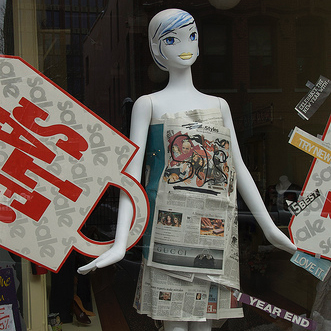 Paul Krill, editor at large of the information technology blog InfoWorld, has posted a pretty good summary of a panel session that took place this past Friday. The session, entitled “Journalism after Print,” was presented by the Churchill Club, a Silicon Valley business and technology association in Palo Alto, California.
Paul Krill, editor at large of the information technology blog InfoWorld, has posted a pretty good summary of a panel session that took place this past Friday. The session, entitled “Journalism after Print,” was presented by the Churchill Club, a Silicon Valley business and technology association in Palo Alto, California.
Panelists included Rebecca Buckman, a freelance journalist who has worked for the The Wall Street Journal and Forbes; Mike Masnick, CEO and blogger at analysis firm Floor64; Ken Doctor, a news industry analyst at Outsell; and Krishna Bharat, distinguished researcher at Google. Sam Whitmore, editor of Sam Whitmore’s Media Survey, acted as moderator.
As Krill described it, the panelists provided discussion on “recognized technology trends that could lead the way for journalism, such as e-reader devices like the Amazon Kindle as well as rich content versions of publications. They also pondered content delivery models including subscription-based Web publications and blogging.”
Some of the more interesting discussion topics were:
- Disagreement about whether the Amazon Kindle e-reader is the “savior” of journalism. Masnick thought the Kindle itself was too specific in purpose to serve that role.
- Tablet devices may inspire more content-rich versions of publications, such as Sports Illustrated. Masnick wondered aloud why similar presentations aren’t already in place on the publications’ web sites, however, when not a lot of readers have tablets yet.
- Varying viewpoints of “pay walls,” which means that news sites require paid subscriptions in order to read its full online content. Masnick said that someone else will just offer the same for free, but Buckman thinks a flat subscription fee should be utilized for top-tier news sites.
Krill also quoted Masnick on citizen journalism:
Masnick said long-form stories do not necessarily need to be written by a single reporter, and that more people besides journalists are participating in the storytelling process. “I would argue that there’s probably a billion more things being told today,” than previously, he said.
SOURCE: “Debating journalism’s post-print path,” InfoWorld, 01/15/10
Image by zappowbang on Flickr, used under its Creative Commons license.